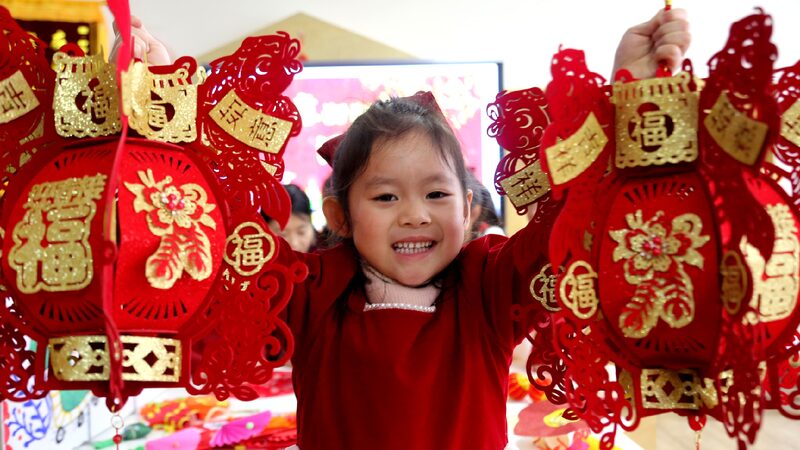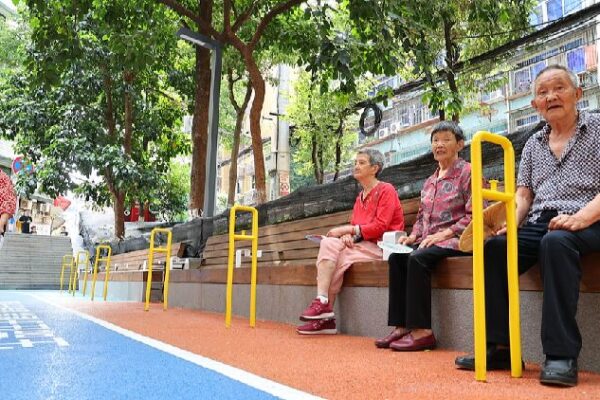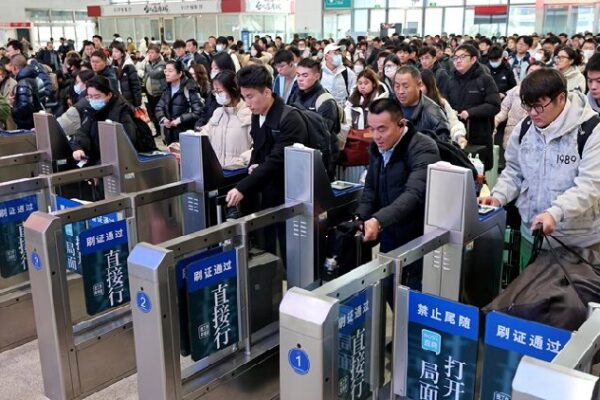At 5:30 a.m., Wang Hui stood patiently at Shenzhen North Railway Station, ready to board the first high-speed train from Shenzhen to Xi’an. The train, departing at 6:08 a.m., would carry her and her family back to her hometown in northwest China.
“I’ve been in Shenzhen since university, and now I have my own family, but every year, as the Spring Festival approaches, I can’t help but feel the pull of home,” Wang said with a smile, despite the early hour and the long journey ahead.
Another traveler, Ms. Zhong, was heading back to Chenzhou in central China’s Hunan Province. Having lived in Shenzhen for over a decade, she shared similar sentiments. “I’ve planned this trip for a month. The Spring Festival is when you want to be with family and embrace the traditions that connect us,” she said.
Record-Breaking Travel Rush
The Spring Festival travel rush, known as chunyun, is underway across the Chinese mainland. Millions, like Wang and Zhong, are embarking on journeys to reunite with family for the most significant holiday of the year.
This year’s travel rush began on January 14 and will last until February 22, spanning 40 days. Authorities expect an unprecedented nine billion inter-regional trips during this period. By January 19, over one billion inter-regional trips had already been made, according to transportation officials.
Major cities like Guangzhou, Shanghai, Shenzhen, Beijing, and Hangzhou are seeing a mass exodus as people return to their hometowns. Tourist destinations such as Harbin, Chongqing, and Chengdu are among the most popular, according to online travel agency Ctrip.
Reconnecting with Tradition
For many, the Spring Festival is more than just a time to reunite with family; it’s an opportunity to reconnect with cultural roots and traditions. Festivities include shopping for festival goods, pasting Spring Festival couplets, giving red envelopes (hongbao), lighting fireworks, hanging lanterns, and staying up on New Year’s Eve (shousui).
Watching the Spring Festival Gala, an annual television event broadcast since 1983, remains a centerpiece of the celebrations. The four-and-a-half-hour program features a mix of singing, dancing, opera, comedy sketches, martial arts, and acrobatics. This year’s gala, the first since the Spring Festival was inscribed on UNESCO’s Intangible Cultural Heritage list, integrates more elements of this cultural legacy.
Cultural Heritage Takes Center Stage
Intangible cultural heritage is playing a significant role in this year’s festivities. In Chongqing, traditional items like paper-cuttings, shadow puppets, and New Year paintings are in high demand. “More people are seeking unique, handmade gifts that reflect our heritage,” said Mr. Guo, owner of a local cultural shop.
Cultural tourism is also booming. From learning traditional paper-cutting in Zhejiang Province to experiencing the Lantern Festival in Zigong City, people are flocking to destinations offering immersive cultural experiences. Data from Meituan Travel indicates that searches for intangible cultural heritage experiences, such as the huohu (fire pot) performance in Guiyang and the Zigong Lantern Festival, have significantly increased compared to previous years.
A Boost to the Economy
The combination of record-high travel and a surge in cultural consumption is fueling a vibrant tourism market and injecting new vitality into the country’s economy. As millions hit the road to celebrate the Spring Festival, they are not only strengthening family bonds but also contributing to the preservation and celebration of China’s rich cultural heritage.
Reference(s):
China's Spring Festival: Record-breaking travel, cultural feast
cgtn.com








